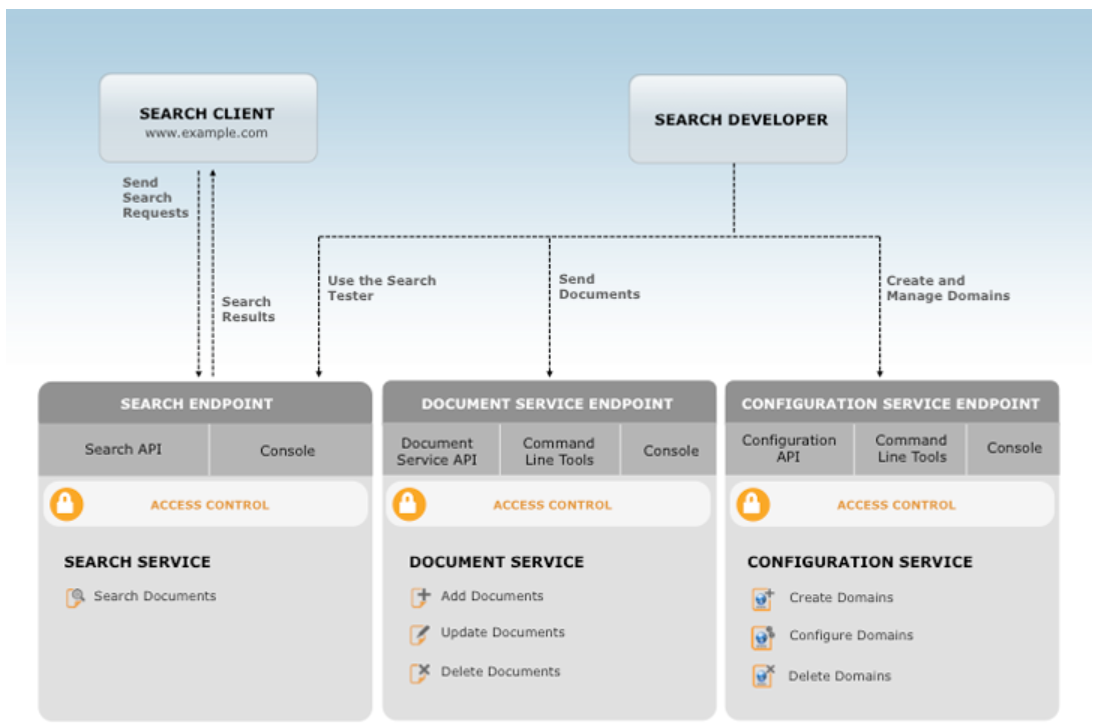Amazon Web Services (AWS): CloudSearch: Points to remember
Let's learn about Amazon CloudSearch:
-
CloudSearch is a fully-managed service in the AWS Cloud that makes it easy to set up, manage & scale a search solution for an application.
-
CloudSearch provides easy configuration, auto scaling for data and traffic, self-healing clusters and high availability with Multi-AZ.
-
CloudSearch is automatically scales with the volume of data and complexity of search requests to deliver fast and accurate results.
-
CloudSearch lets customers add search capability without needing to manage hosts, traffic and data scaling, redundancy or software packages.
-
CloudSearch supports 34 languages, plus 'multiple' to handle mixed language fields.
-
It also supports Per-field language configuration & Language-specific text analysis.
-
It's enhanced search features provides: Suggestions, Highlighting, Geospatial search, Term boosting and Sloppy phrase search.
-
It's administration features provides: High availability option, IAM integration and User configurable scaling.
-
The new version of CloudSearch supports dictionary stemming in addition to algorithmic stemming.
-
The latest version of CloudSearch has been modified to use Apache Solr as the underlying text search engine.
-
CloudSearch supports two types of text fields, text and literal.
-
CloudSearch has a native type to support latitude and longitude, so that users can easily implement geographically-based searching and sorting.
-
CloudSearch is designed to efficiently process a wide range of search requests very quickly.
-
CloudSearch supports the following instance types: Small Search Instance, Large Search Instance, Extra Large Search Instance and Double Extra Large Search Instance.
-
When the Multi-AZ option is enabled, CloudSearch instances in either zone are capable of handling the full load in the event of a failure.

-
CloudSearch enables users to specify the desired instance type for their domain.
-
Users send AWS their data using a secure and encrypted SSL connection by using HTTPS instead of HTTP when they connect to CloudSearch.
-
For CloudSearch, AWS do not support user-generated encryption keys. Users will need to decrypt the data and upload it using HTTPS.
-
CloudSearch offers powerful autoscaling for all search domains.
-
CloudSearch provides automatic monitoring and recovery for search domains.
-
CloudSearch ensures low latency and high throughput performance.
-
CloudSearch uses strong cryptographic methods to authenticate users and prevent unauthorized access to domains.
-
To make data searchable, users need to format it in JSON or XML and upload it to search domain for indexing.
-
The HTTP status codes returned by the CloudSearch APIs indicate whether the request completed successfully or an error occurred while processing the request.
-
CloudSearch provides regional endpoints for accessing the configuration service and domain-specific endpoints for accessing the search and document services.
A Points to remember series by Piyush Jalan.